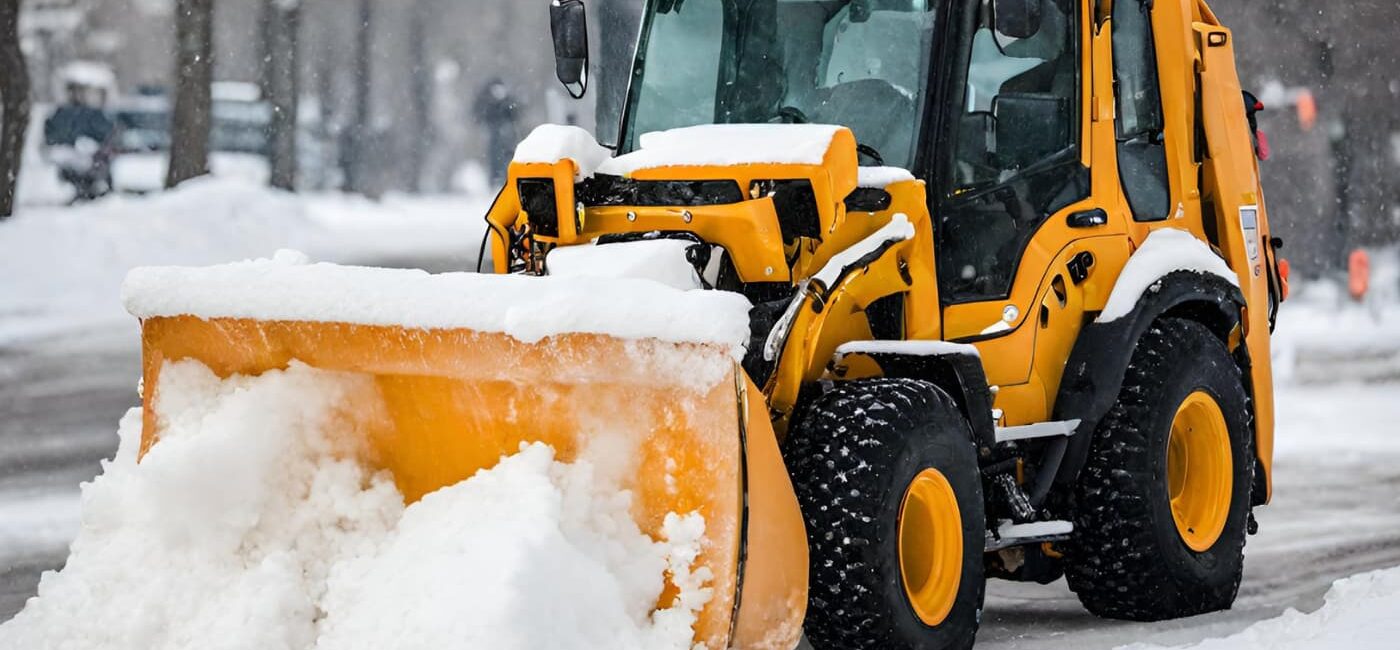Winter’s arrival transforms the landscape into a serene wonderland, but for commercial properties, it also brings significant challenges. Snow and ice can quickly turn into safety hazards and accessibility barriers. To navigate the icy path to safety and operational continuity, commercial properties must implement robust snow removal safety protocols such as blue salt for snow. In this comprehensive guide, we’ll explore the critical importance of these protocols and how staying informed about the winter forecast plays a pivotal role.
Understanding the Need for Snow Removal Services
Commercial properties require professional snow removal services to address the dangers posed by winter weather. Accumulated snow and ice not only create safety risks but also hinder accessibility for customers and employees. Snow removal and rock salt for ice is the frontline defense against these challenges, ensuring that commercial properties remain safe and operational.
Snow and ice accumulation can turn parking lots and walkways into treacherous zones, increasing the risk of slips, falls, and accidents. Moreover, blocked entrances can deter customers and disrupt daily operations. For businesses, it’s not just about convenience; it’s about safety and maintaining a welcoming environment.
Navigating Winter Forecast
Winter forecasts can be notoriously unpredictable, with a fair share of surprises. Understanding typical weather conditions and keeping a close eye on forecasts is crucial for businesses. The variability of winter weather in your area necessitates a proactive approach to snow removal planning.
By staying informed about the winter forecast, businesses can anticipate the challenges that lie ahead. Timely information about upcoming storms, temperature fluctuations, and expected snowfall amounts allows for strategic planning. It enables businesses to allocate resources, schedule snow removal services, and ensure that safety protocols are in place before the storm hits.
Implementing Safety Protocols
Effective snow removal safety protocols are the cornerstone of safe winter operations for commercial properties. These protocols encompass a range of guidelines and practices to ensure safety during snow removal operations. Key considerations include:
- Safe Equipment Use: Proper use of snow removal equipment is vital to prevent accidents and injuries. Employees should be trained in the safe operation of snowplows, snow blowers, and other machinery. Regular maintenance checks on equipment ensure that it functions correctly during snow removal operations.
- Personnel Safety: Snow removal teams must prioritize safety at all times. This includes wearing appropriate protective gear, maintaining visibility through reflective clothing, and using caution to prevent accidents. Proper hydration and rest breaks are also crucial to prevent fatigue-related incidents.
- Training and Awareness: All staff members should be aware of snow removal protocols and trained to respond effectively to winter weather conditions. Regular training updates keep employees informed and prepared for the challenges of winter. Additionally, businesses should conduct safety drills to ensure that everyone knows their roles during snow emergencies.
- Environmental Considerations: Safety protocols should also address environmental concerns. Proper disposal of snow and ice-melting materials, such as salt or sand, is essential to prevent contamination of nearby water sources. Businesses should follow environmental regulations and best practices in snow removal.
Managing Liability and Risk
Snow removal at commercial properties carries legal and liability implications. Businesses must take steps to reduce risk and potential liability. Key measures include:
- Mitigating Risks: Implementing safety protocols and regular maintenance can significantly reduce the risk of accidents and injuries during snow removal. By addressing potential hazards proactively, businesses can minimize the chances of costly incidents.
- Documentation: Keeping thorough records of snow removal activities is invaluable in case of liability claims. Documenting the dates, times, and personnel involved in snow removal operations can provide crucial evidence in legal proceedings. It’s a proactive measure that can save businesses from legal headaches down the line.
- Insurance Coverage: Ensuring that the business has appropriate insurance coverage for winter weather-related incidents is essential for risk management. Businesses should review their insurance policies to confirm that they are adequately protected in case of accidents or property damage during snow removal operations.
Collaborating with Professional Snow Removal Services
One of the most effective ways to enhance snow removal safety is by partnering with professional snow removal services. These experts bring several advantages to the table:
- Specialized Equipment: Professional services have specialized equipment designed for efficient and safe snow removal. This reduces the risk of accidents and property damage. Their well-maintained machinery can clear snow and ice with precision, minimizing potential hazards.
- Experience: Experienced snow removal teams understand the nuances of winter weather and can respond effectively to changing conditions. They are well-versed in the best practices for snow removal, ensuring that the process is conducted safely and efficiently.
- Reliability: Businesses can rely on professional snow removal services to provide timely and consistent snow removal, ensuring safety and accessibility. With 24/7 availability, these services are ready to respond to snow emergencies promptly.
- Compliance with Regulations: Professional snow removal services are well-informed about local regulations and environmental concerns related to snow removal. They ensure that all operations are conducted in compliance with relevant laws, reducing the risk of legal issues for businesses.
Conclusion
As winter descends upon us, commercial properties must prioritize safety and operational continuity. Snow removal safety protocols are the cornerstone of navigating the challenges posed by snow and ice. Staying informed about the winter forecast is equally important, allowing businesses to plan and respond effectively to winter weather conditions.
By implementing robust safety protocols, managing liability and risk, and collaborating with professional snow removal services, commercial properties can ensure a safe and accessible environment for customers and employees, even in the coldest of winters. Winter’s beauty need not come at the expense of safety and operational efficiency, and with the right approach, businesses can thrive in the snow-covered landscape.
